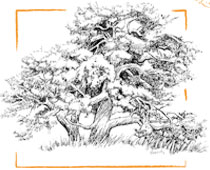Classes at Sedgwick Reserve span the sciences and humanities. Below are descriptions of some previous classes to help you imagine the possibilities. If you have an idea that you want to discuss, feel free to contact us at nrs-sedgwick@ucsb.edu.
Astrophotography
Mt. San Antonio College
We set up three astrophotography telescopes and a few small tables to take pictures at night.
Biological Community Survey and Analysis
University of California, Santa Barbara
Illustrate field survey methods for biodiversity monitoring for different taxonomic groups from herbaceous plants to mammals. Exercises on herbaceous vegetation sampling, woody plant sampling, camera trapping, and remote sensing. Spend 3 days at Sedgwick and 3 days at Coil Oil Point.
California Ecology and Conservation
University of California
A 7-week field course where students visit different reserves as they complete a series of research projects, learn field techniques, and present findings in oral, poster, and written formats. They hone research, public speaking, and scientific writing skills while gaining familiarity with California’s ecosystems.
Ecological Security and Research Design
University of Southern California
This course helps to educate students about how governments compete and cooperate over the governance of natural resources.
Ecopsychology
Pacifica Graduate Institute
This is a time for students to engage in simple nature awareness activity. There is some teaching in the studio or outdoors, depending on weather.
Ecosystems of California
University of California, Santa Barbara
The ecosystems of California are studied from both an ecological and historical biogeographical perspective with a focus on terrestrial plant communities. Students learn how to identify about 150 species of native plants.
Field Studies in Water, Energy, and Ecosystems
University of California, Santa Barbara
This week-long intensive course, offered during the UC-system spring break, provides an introduction to the principles of environmental physics and their application to ecological sciences, with a focus on combined instrumentation methods and analytical approaches for characterizing the spatial and temporal patterns of water and energy flows through California ecosystems. Lectures and field activities address the theory of operation, design, and implementation of methods used to quantify patterns and processes of energy and water with particular emphasis on characterizing the biological signature and ecological impact of coupled landscape ecological/hydrological dynamics.
General Zoology
Hancock College
Lower division Zoology students are introduced to field research. They place motion activated cameras in the reserve and follow up thru the semester (at least once) to collect the data. This is a wonderful opportunity for community college students to do an investigation both inside and outside the classroom.
Introduction to Environmental Media Production
University of California, Santa Barbara
Teach applied scientists the basics of audio visual storytelling by filming wildlife and documenting science projects on the reserve.
Landscape Music
University of California, Santa Barbara
Students learn about composing “landscape music”–in all of its many forms. They spend the day hiking, journaling, sketching, doing listening exercises, and other activities designed to help them immerse themselves in a particular landscape.
Levels of Biological Organization
University of California, Santa Barbara
Welcome the incoming class of graduate students to the department. Introduce students to the UC Reserve system.
Measuring our Environment
University of California, Santa Barbara
This class maintains a pair of micromet towers, one deployed at AIRS, the other at Lisque Creek (first installed in 2007). This class allows students to repeat observations at the AIRS station along 6 fixed transects, estimating canopy height, measuring species composition, surface albedo and temperature. They use digital cameras to quantitatively measure fractional cover using a CCD camera and surface temperature with a FLIR. Field measures are a repeat of observations made in 2008, 2011, 2013, 2015, 2017 and 2023, providing a time series of change.
Science and Management for Forest Sustainability
University of California, Santa Barbara
The field trip is being offered to support the seminar with the goals to recognize the social and biophysical dimensions of forest sustainability, understand how differing types of forests face differing sustainability challenges, connect forest sustainability issues with principles you have learned or will learn elsewhere in the MESM curriculum.
Soil Genesis
University of California, Santa Barbara
We dig soil pits and describe the soils as part of our class objective to glean a better understanding of how physical and chemical erosion processes affect soil development and the distribution of rock derived nutrient on hillslopes. All pits are be back-filled after description. As part of our trip we sample soils from a hillslope pit in windmill canyon to take back to the lab for analysis.
Tactical Leadership
University of California, Santa Barbara
Cadets utilize the pastures to practice tactics. They also learn about the Reserve system.
Terrestrial Vertebrate Ecology and Evolution
University of California, Santa Barbara
By the end of the class, students are able to 1) identify terrestrial vertebrates using “ecological clues”: habitat, behavior, morphology, and 2) understand animal survey methods and how they fit into experimental design. To that end, we visit Sedgwick Reserve to 1) check the coverboards set by the Young lab, and 2) bird as we walk the trails to check coverboards.
Walking Biology
University of California, Santa Barbara
Students come to the reserve for an overnight field trip. We take hikes to observe the grassland and oak woodland habitats.
